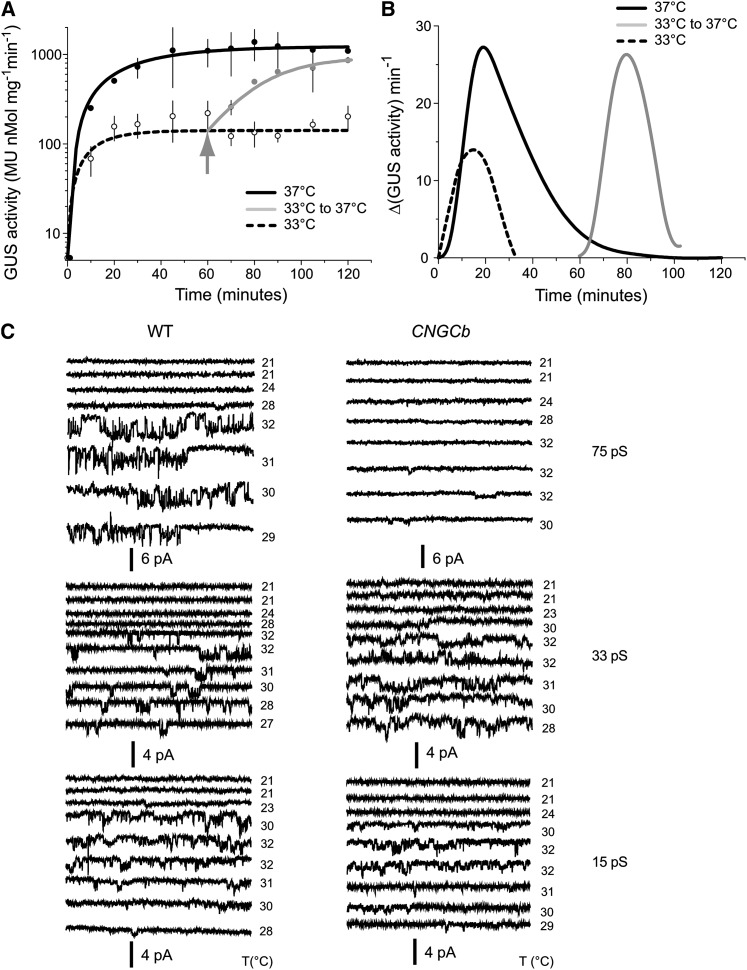Figure 5.
Mosses Have Multiple Thermosensors with Different Activation Thresholds.
(A) GUS levels in tissues of wild-type HSP-GUS moss reporter line grown at 25°C, exposed either continuously for 2 h at 33°C (dashed line) or at 37°C (black line) or discontinuously, first for 1 h at 33°C then for 1 h at 37°C (gray line). Recovery was done at 25°C for 16 h. Means and sd are from three independent repeats. MU, 4-methylumbelliferone glucuronide.
(B) The time-dependent evolution of the net HSR from (A), expressed as the time-dependent averaged differences of the rates of GUS accumulation per minute.
(C) Changes in membrane conductance reflecting the activity of Ca2+-permeable channels in moss protoplast attached patches, during a mild temperature upshift from 21°C up to 32°C and back to 29°C. In wild-type (WT) protoplasts (left-hand panels), three distinct temperature-induced conductances are observed with 75-pS (top), 33-pS (middle), and 15-pS (bottom) unitary conductances. In the CNGCb mutant (right-hand panels), the 75-pS conductance was not recorded. By contrast, the 33-pS and possibly also the 15-pS conductance in the mutant protoplasts acquired a higher Po at comparable temperatures. Each trace was recorded at −80 mV and has a duration of 0.5 s, and temperatures are denoted on the right-hand side.

